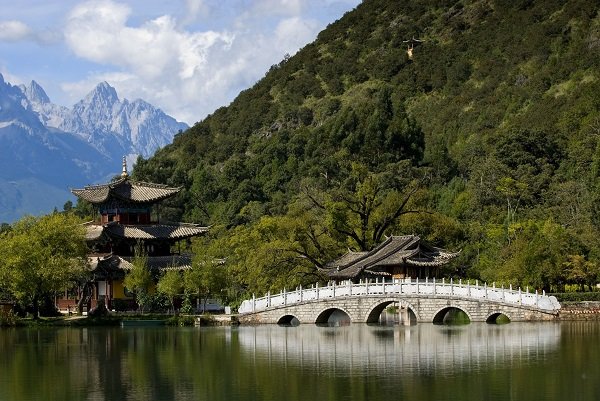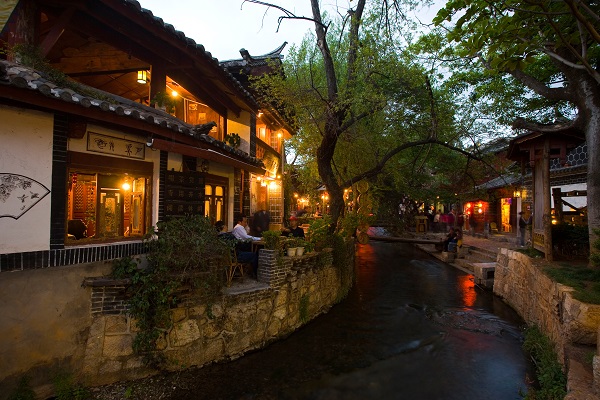

The picturesque old town of Lijiang , with its wooden buildings, canals and bridges, sits some 8,000 feet above man and time. It is situated in north-western Yunnan Province, about 100 miles directly to the west is Myanmar (Burma), a little further to the north-west is Tibet, while directly north, past the magnificent Jade Dragon Snow Mountain, is the Chinese province of Sichuan. Lijiang lies, then, at a crossroads between different worlds, a fact strongly represented in the history, languages, and peoples of the area. While the various Silk Roads that ran from China through central Asia toward Europe are indisputably more famous, Lijiang was and is located along another famous trading route, sometimes confusingly referred to as the 'Southern Silk Road', we refer to it here by the correct designation of the 'Old Tea and Horse Route' along which moved, unsurprisingly, mainly teas and horses. Those commodities formed the backbone of an active trade for a thousand years, and were the cause of Lijiang's founding around 800 years ago, as well as much of Lijiang's relative prosperity for the ensuing centuries.
Nestled comfortably into a number of mountains to the north, and with natural watercourses making their way through the town it was always going to be a fine place for habitation. The Jade Dragon Snow Mountains which dominate the landscape have always played an important role in the town's psyche. The highest peak clears 18,000 feet and was only scaled for the first time in the 1960s. The history and man and mountain is close here. Various rites are performed on the main mountain, and its birthday is celebrated by the town on the eighth day of the second month of the lunar calendar. The mountain has also been a source of much water for the town and water usage was closely monitored. Since the whole village used the water running through the village, there were certain communal rules governing the use of water. Until noon , the water was for drinking. From 12 to 1pm , food could be washed in the stream, and from 2pm you could wash your clothes. Nowadays people brush their teeth and wash their hands in the streams, something that twenty years ago would not have been allowed.

One of the features of the old town is the wooden buildings. Naxi architecture is regarded as a happy marriage of Han structures with Bai carpentry and Tibetan painting styles. Were it not for mother nature and tourism we may not see so much of the old town today. as a result of the remarkable development in the 1980s Naxi people knocked down their old wooden houses and rebuilt them in stone and cement. Then, in the 90s with the growth of the tourism industry, and a gentle hand along from a dreadful earthquake that oddly left many of the wooden buildings standing while toppling their stone neighbours, the Naxi knocked these stone imitations and rebuilt their houses with wood again.
While the stone houses came and went one cultural feature that has long been present on the streets of Lijiang is the confusion of tongues. How many languages were on the streets of Lijiang at any one time is a question with no set answer, but these days in Lijiang, if you've a linguist's ear, you'll hear Bai, Yi, Tibetan, Naxi, Mandarin, and a smattering of other languages. It'll come as no surprise then to hear that there are people from ten or so different ethnicities in the town. However, a clear majority of people, both in town and in the surrounding area of the Lijiang Basin , are from a group known as the Naxi, who came to the area sometime during the Tang dynasty (618-907).